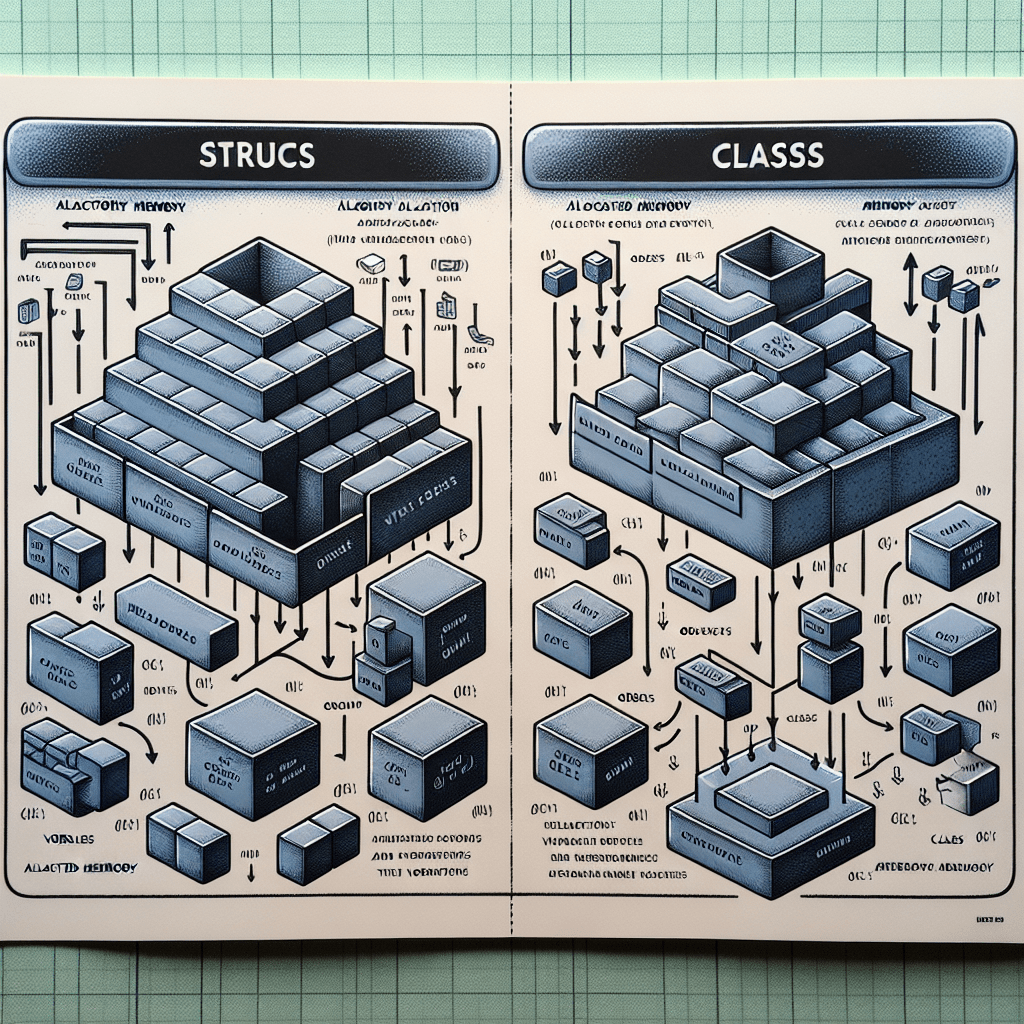Navigating the Modern Swift Interview Landscape
The landscape of Swift and iOS development interviews has evolved significantly. Gone are the days of simply reciting language definitions. In 2025, hiring managers are looking for engineers who possess a deep, practical understanding of the Swift language, its powerful concurrency features, and modern architectural principles. The emphasis has shifted from “what” to “why” and “how.” Companies want to see that you can not only solve a problem but also design a robust, scalable, and maintainable solution. The rise of declarative UI with SwiftUI and the introduction of a new concurrency model with async/await have reshaped the core competencies required of a top-tier candidate. According to the JetBrains “The State of Developer Ecosystem 2023” report, SwiftUI is now used by 42% of Swift developers, a clear indicator that proficiency in this framework is no longer optional but a firm expectation for many roles. This modern interview demands a holistic approach, blending strong foundational knowledge with an awareness of the latest ecosystem trends. You must be prepared to discuss trade-offs, defend your architectural choices, and demonstrate a forward-thinking mindset. This means understanding not just how to implement a feature, but how that feature fits within the larger context of an application, considering performance, memory management, and user experience.

Core Swift Language Fundamentals
A deep command of Swift’s core principles remains the bedrock of any successful interview. While shiny new frameworks are important, a misunderstanding of the fundamentals will quickly be exposed under technical scrutiny. These concepts are not just trivia; they directly influence the performance, safety, and design of your code every single day. Interviewers will probe your knowledge here to gauge the depth of your expertise and your ability to write efficient, idiomatic Swift code.
Value vs. Reference Types (struct vs. class)
One of the most fundamental and frequently asked questions revolves around the distinction between value types (primarily structs and enums) and reference types (classes). The core difference lies in how they are stored and passed around in your code. Value types are copied when they are assigned to a new variable or passed into a function, meaning the new variable has its own independent copy of the data. This happens on the stack, which is very fast for allocation and deallocation. In contrast, reference types are not copied. When you assign a class instance to a new variable, both variables point to the exact same instance in memory, stored on the heap. This is a shared reference, and a change made through one variable will be visible to the other.
A common interview question is: “When would you choose a struct over a class, and why?” The answer reveals your understanding of performance, data modeling, and thread safety. You should generally prefer structs because they are simpler and safer. Since they are copied, you don’t have to worry about another part of your app changing your data unexpectedly, which makes them inherently more thread-safe. They are perfect for modeling data that doesn’t have a distinct identity, like a Point in a coordinate system or a Color value. Use a class when you need a single, shared, mutable state. This is common for objects that represent a unique entity, like a UserProfileManager or a NetworkService, where there should only be one “source of truth.” You should also mention Copy-on-Write (CoW), an optimization Swift uses for large value types like arrays and dictionaries, where the data is only truly copied when it is about to be modified, providing performance benefits. A strong answer demonstrates an appreciation for this “default to value types” philosophy central to modern Swift.

Optionals and Unwrapping
Swift’s approach to handling the absence of a value is a major feature that promotes safety and prevents null pointer exceptions common in other languages. Optionals are a core concept you must master. An optional is essentially a wrapper that can either contain a value or be nil. Interviewers will test your ability to work with them safely and efficiently. The most dangerous operation is force unwrapping using the ! operator. While it has its uses, such as when you are absolutely certain a value exists (e.g., an outlet connected in a storyboard), its overuse is a red flag, indicating a disregard for safety.
Your discussion should focus on safe unwrapping techniques. Optional binding with if let and guard let is the most common and preferred method. if let unwraps the optional and executes a block of code if a value exists. guard let is even more powerful for promoting early exits; it unwraps the optional, and if it’s nil, it forces you to exit the current scope (e.g., with return or throw), making your code cleaner and avoiding deeply nested if statements. Another key technique is optional chaining (?), which allows you to call properties, methods, and subscripts on an optional that might currently be nil. If the optional is nil, the entire chain gracefully fails and returns nil without crashing. The nil-coalescing operator (??) is also crucial. It provides a default value if the optional is nil, allowing you to unwrap and provide a fallback in a single, concise line of code. Being able to articulate the specific use case for each of these techniques is a sign of a mature Swift developer.
Memory Management: ARC Explained
Swift uses Automatic Reference Counting (ARC) to manage memory usage. Unlike garbage collection, which periodically scans for and cleans up unused objects, ARC works deterministically by keeping a count of how many active references there are to each class instance. When the reference count for an instance drops to zero, meaning nothing is holding onto it, the memory is deallocated immediately. While ARC handles most memory management for you, it is not a magic bullet. The most critical topic to understand is retain cycles, also known as strong reference cycles. This occurs when two or more class instances hold a strong reference to each other, creating a “loop” where their reference counts can never drop to zero, even when they are no longer needed by the rest of the application. This results in a memory leak.
A classic interview question is: “Describe a scenario that leads to a retain cycle and how you would resolve it.” The most common example involves a class and a closure. If a class property is a closure, and that closure captures a strong reference to the class instance (by using self inside it), you create a retain cycle. The class owns the closure, and the closure owns the class. To break this cycle, you must use a capture list. You declare one of the references as either weak or unowned. A weak reference is an optional reference that does not increase the reference count. It automatically becomes nil when the instance it refers to is deallocated. An unowned reference is similar but is non-optional and assumes the referenced object will always exist for the lifetime of the reference. Using unowned when the object could be nil will cause a crash. Your ability to explain the difference between weak and unowned and when to use each—weak when the reference can become nil, unowned when you can guarantee it won’t—demonstrates a deep understanding of Swift’s memory model.
Protocols and Generics
Swift is often described as a Protocol-Oriented Programming (POP) language, and for good reason. Protocols define a blueprint of methods, properties, and other requirements that suit a particular task or piece of functionality. They are a powerful tool for abstraction, allowing you to write flexible and decoupled code. Instead of relying on a rigid class hierarchy through inheritance, you can define behavior through protocols and have any struct, class, or enum adopt them. This enables polymorphism for value types, a significant advantage over traditional object-oriented programming.
Generics are another cornerstone of Swift’s power, allowing you to write flexible, reusable functions and types that can work with any type, subject to specified constraints. When combined with protocols, they become incredibly expressive. A common modern interview topic is the difference between some Protocol and any Protocol, which were refined in recent Swift versions. some Protocol is an opaque type, which means the function returns a concrete type that conforms to the protocol, but the caller doesn’t need to know the specific type. The key is that the underlying type is fixed for a given return. any Protocol is an existential type, which acts as a wrapper (or “box”) that can hold any concrete type conforming to the protocol. This provides more flexibility but can come with a performance cost due to the need for dynamic dispatch. Explaining this distinction shows you are up-to-date with the evolution of the language. To deepen your foundational knowledge, an Introduction to Swift can be an excellent refresher.
Concurrency: From GCD to Async/Await
Concurrency has always been a challenging aspect of application development, and Swift’s approach has undergone a revolutionary transformation. An understanding of this evolution, from older patterns to the modern structured concurrency model, is absolutely critical for any mid-level or senior iOS role in 2025. Interviewers will expect you to be fluent in the new syntax and, more importantly, to understand the problems it solves.
The Evolution of Concurrency in Swift
For years, iOS developers relied on Grand Central Dispatch (GCD) and Operation Queues for concurrent and asynchronous tasks. GCD is a powerful, low-level C-based API that manages queues of tasks, allowing you to easily dispatch work to background threads to avoid blocking the main UI thread. While effective, it often led to complex, nested completion handlers, a pattern infamously known as the “Pyramid of Doom” or “Callback Hell.” This made code difficult to read, reason about, and debug. Error handling was also cumbersome, often requiring custom error-passing conventions within completion handlers. Operation Queues provided a higher-level, object-oriented abstraction over GCD, allowing for more complex operations with dependencies, but the fundamental challenges of callback-based asynchronous programming remained. Recognizing these pain points, Apple introduced a completely new concurrency model built directly into the Swift language.
Mastering Async/Await
The centerpiece of Swift’s modern concurrency model is the async/await syntax. This provides a way to write asynchronous code that reads like synchronous, sequential code. When you call a function marked with async, you use the await keyword to pause the execution of the current function until the asynchronous function completes and returns a value. Behind the scenes, the system can suspend your function and use the thread for other work, making it incredibly efficient. This completely eliminates the need for nested completion handlers. Error handling is also dramatically simplified, as async functions can throw errors, which can be caught using a standard do-catch block, just like synchronous code. A typical interview question might be: “Rewrite this closure-based network call using async/await and explain the benefits.” Your answer should highlight improved readability, simplified error handling, and the elimination of the Pyramid of Doom, leading to more maintainable and less error-prone code.
Understanding Actors and Data Races
One of the biggest challenges in concurrent programming is managing shared mutable state. When multiple threads try to access and modify the same piece of data at the same time, it can lead to a data race, resulting in corrupted data, unpredictable behavior, and crashes. Historically, this was managed using locks, semaphores, or serial dispatch queues to ensure that only one thread could access the data at a time. These mechanisms are powerful but are notoriously difficult to use correctly and can easily lead to deadlocks.
To solve this problem, Swift introduced Actors. An actor is a special kind of reference type that protects its state from concurrent access. All access to an actor’s mutable properties and methods must be done asynchronously. When you call a method on an actor from the outside, you must await the call. The actor system ensures that only one piece of code is running inside the actor at a time, effectively creating a synchronized “island” for your mutable state. This synchronization is handled automatically, eliminating the need for manual locking and preventing data races at compile time. Being able to explain that an actor is a synchronization primitive that serializes access to its internal state is key to demonstrating your grasp of modern Swift concurrency.
Architectural Patterns and System Design
Beyond language syntax, interviewers want to assess your ability to structure an application. System design questions test your understanding of high-level concepts, software architecture, and the trade-offs involved in building scalable and maintainable apps. Your choice of architecture impacts testability, scalability, and how easily new developers can contribute to the codebase.
Common iOS Design Patterns
You should be prepared to discuss and compare several common architectural patterns. The most traditional is Model-View-Controller (MVC), which Apple has long used in its frameworks. In MVC, the Model represents the data, the View is the UI, and the Controller acts as the intermediary. However, in UIKit, the View and Controller are often tightly coupled in the UIViewController, leading to a common problem known as the “Massive View Controller.”
To address this, patterns like Model-View-ViewModel (MVVM) have gained immense popularity, especially with the rise of SwiftUI. In MVVM, the ViewModel sits between the Model and the View. It prepares and provides data from the Model in a format that the View can display directly, often through data binding. The View’s role becomes very simple: it just reflects the state of the ViewModel. This separation makes the view logic much easier to test, as the ViewModel has no direct dependency on the UI. Another pattern you might discuss is VIPER (View, Interactor, Presenter, Entity, Router), which provides even greater separation of concerns but at the cost of increased complexity and boilerplate. For most interviews, a deep understanding of the pros and cons of MVC and MVVM is sufficient.
| Pattern | Key Responsibility Separation | Testability | Common Use Case |
|---|---|---|---|
| MVC | Model (Data), View (UI), Controller (Mediator) | Moderate; “Massive View Controller” can be hard to test. | Traditional UIKit applications. |
| MVVM | Model (Data), View (UI), ViewModel (Presentation Logic) | High; ViewModel is independent of the UI. | SwiftUI, or UIKit with reactive frameworks. |
| VIPER | View, Interactor, Presenter, Entity, Router | Very High; single responsibility for each component. | Large, complex applications requiring strict boundaries. |

Dependency Injection
Dependency Injection (DI) is a design pattern used to implement Inversion of Control, where the responsibility of creating dependencies is transferred from the object itself to an external entity. In simpler terms, instead of an object creating its own dependencies (e.g., a ViewModel creating its own NetworkService), those dependencies are “injected” or passed into it from the outside. The primary benefit of this is loose coupling. Your objects are no longer tied to specific implementations of their dependencies, making your code more modular, flexible, and, most importantly, testable. During unit testing, you can easily inject mock or fake versions of dependencies (like a mock network service that returns canned data) to isolate the object you are testing.
There are several ways to implement DI: Initializer Injection, where dependencies are passed in through the init method, is the most common and robust approach as it ensures the object is in a valid state upon creation. Property Injection, where dependencies are set via public properties, is more flexible but can leave the object in an incomplete state. Method Injection involves passing the dependency as a parameter to a specific method that needs it. Your ability to explain why DI is crucial for writing testable code is a strong signal of a senior-level mindset.
Frameworks and Ecosystem Knowledge
A proficient Swift developer is not just an expert in the language but also in the broader Apple ecosystem. This includes a solid understanding of key frameworks for UI, networking, and data persistence, as well as the ability to make informed decisions about when to use which tool.
SwiftUI vs. UIKit
One of the biggest topics in the iOS world today is the relationship between SwiftUI and UIKit. UIKit is the older, imperative framework where you build your UI by creating and manually manipulating a hierarchy of view objects. SwiftUI is Apple’s newer, declarative framework. With SwiftUI, you describe what your UI should look like for a given state, and the framework automatically figures out how to render and update it when the state changes. This leads to more concise, readable, and less error-prone UI code.
However, the reality of iOS development in 2025 is that most large, mature applications are still heavily reliant on UIKit, while new features and new apps are increasingly being built with SwiftUI. Therefore, a crucial skill is understanding how to make them interoperate. You can host a SwiftUI view inside a UIKit hierarchy using UIHostingController, and you can embed a UIKit view or view controller within a SwiftUI view hierarchy using UIViewRepresentable and UIViewControllerRepresentable. An interviewer might ask, “When might you need to fall back to UIKit in a modern SwiftUI app?” A good answer would mention scenarios where you need access to a specific UIKit component that has no SwiftUI equivalent yet, or when you need to integrate with a third-party SDK that only provides UIKit views.
Networking and Data Persistence
Nearly every application needs to communicate with a server and store data locally. For networking, URLSession is the go-to framework. You should be comfortable explaining how to construct a URLRequest, execute it with URLSession, and handle the response. A key skill is parsing JSON data into your Swift data models. The Codable protocol makes this incredibly straightforward, allowing you to decode JSON into your structs and classes with minimal code. With modern concurrency, you can now use the data(for: URLRequest) method on URLSession, which is an async function, making network calls cleaner than ever. For a practical guide on this, exploring Networking with SwiftUI can be very beneficial.
For data persistence, you should be familiar with a range of options. UserDefaults is suitable for storing small pieces of data, like user settings. For storing custom objects or larger amounts of data, you can use the file system by encoding your Codable objects to data and writing them to disk using FileManager. For more complex, database-like needs, Apple’s Core Data is a powerful and mature object graph management framework. While it has a steep learning curve, understanding its basic concepts like NSManagedObjectContext and the main-thread-only rule is important. Other popular third-party options like Realm or SQLite are also worth knowing about. The key is to understand the trade-offs of each option and to be able to choose the right tool for the job.
Beyond the Code: The Behavioral Interview
Technical prowess is only half the battle. Companies hire people, not just programmers. The behavioral interview is designed to assess your soft skills: communication, teamwork, problem-solving abilities, and passion for your craft. Be prepared to talk about your past experiences in detail. A common and effective technique for structuring your answers is the STAR method: Situation (describe the context), Task (explain your responsibility), Action (detail the steps you took), and Result (quantify the outcome).
You can expect questions like, “Tell me about a time you had a disagreement with a team member and how you resolved it,” “Describe a complex bug you had to fix,” or “How do you keep your skills up-to-date?” When answering, be specific and honest. Instead of saying “I fixed a bug,” explain what the bug was, your process for debugging it (e.g., using breakpoints, reading logs), what the root cause was, and what you learned from it. When discussing how you stay current, mention specific resources you follow, such as official documentation from Apple’s Swift Documentation, proposals from Swift Evolution, blogs, podcasts, or conferences. This shows genuine curiosity and a commitment to professional growth. You can find more tips on how to ace the assessment portion of your interview from trusted career resources.

Your Preparation Checklist for 2025
Success in a Swift interview comes from deliberate and structured preparation. Simply reading articles is not enough; you need to actively engage with the material and practice applying your knowledge. Create a study plan that covers the key areas we’ve discussed and methodically work through it. Start by solidifying your understanding of the basics and then move on to more complex topics.
Your checklist should include hands-on practice. Build a small project or add a new feature to an existing one using modern best practices. For example, refactor a closure-based network layer to use async/await and actors. Implement a feature using SwiftUI and MVVM. This practical experience is invaluable and provides you with concrete examples to discuss during your interview. It’s also critical to review and practice data structures and algorithms, as some companies still include these types of questions. Finally, don’t neglect the behavioral aspect. Think about your past projects and prepare stories that showcase your skills and experience using the STAR method. Mock interviews with peers or mentors can be incredibly helpful for refining your answers and getting comfortable under pressure.
| Preparation Area | Key Activities | Recommended Focus |
|---|---|---|
| Core Language | Review Swift documentation, build small command-line tools. | Value/Reference types, ARC, Optionals, Protocols, Generics. |
| Concurrency | Refactor old projects from GCD/closures to async/await. | Actors, Structured Concurrency, Task management. |
| Architecture | Whiteboard the architecture for a sample app. | MVVM vs. MVC, Dependency Injection, SOLID principles. |
| Frameworks | Create a multi-screen app using SwiftUI and URLSession. |
SwiftUI, UIKit Interoperability, Codable, Core Data basics. |
| Problem Solving | Practice on platforms like LeetCode or HackerRank. | Array/String manipulation, common data structures. |
| Behavioral | Prepare 3-5 stories using the STAR method. | Teamwork, problem resolution, learning from failure. |
Ultimately, the goal is not just to answer questions correctly but to demonstrate that you are a thoughtful, knowledgeable, and collaborative engineer who can be a valuable asset to the team. By focusing on a deep understanding of these core areas, from language fundamentals to high-level architecture, you’ll be well-equipped to tackle any challenge the 2025 Swift interview process throws your way. For those looking to take their skills to the next level, a dedicated learning path like Advanced Swift can provide the structured, in-depth knowledge needed to truly stand out. Your journey to landing that dream role starts with dedicated preparation, so begin today and invest in your future.

Leave a Reply